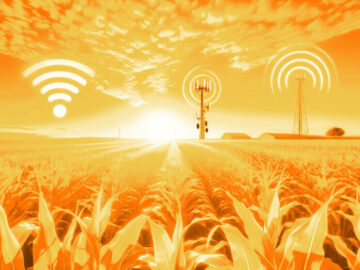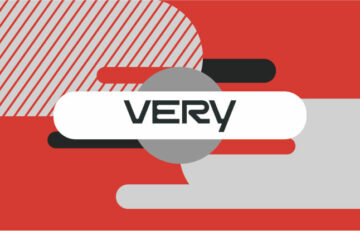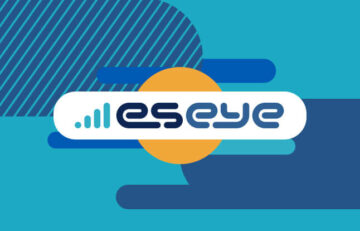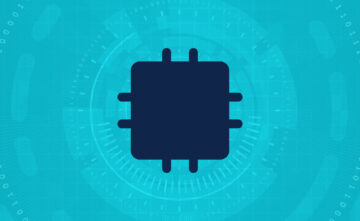
There are more plastics in circulation in the world than people on the planet. In the quest for environmental sustainability, what are the options to transition from traditional single-use plastic SIM cards in favor of innovative solutions like eSIM and iSIM?
Earth Day 2024: A Call to Action
Earth Day 2024 encourages the global community once again to rally around the urgent need for environmental conservation and sustainability. This annual event, born out of the modern environmental movement in 1970, serves as a stark reminder of our collective responsibility to protect the planet. With the recent UN resolution signaling a commitment to end plastic pollution, the stage is set for transformative action. Negotiations for the Global Plastics Treaty, slated for implementation by 2024, offer hope for comprehensive measures to address the full life cycle of plastic, from production to disposal.
This treaty aims to address the full life cycle of plastic, from production to disposal, and includes measures such as curbs on production, a potential ban on single-use plastic items, a “polluter pays” scheme, and a tax on new plastic production.
The Plastic Predicament: A Global Challenge
It is evident that the world’s collective relationship with plastics needs to undergo a significant transformation. Moving from a linear to a circular economy necessitates a fundamental shift in how we approach the production, consumption, recycling, and disposal of plastics.
The magnitude of the plastic problem is staggering. Since its introduction in the 1950s, we have produced a staggering 8.3 billion metric tons (9.1 billion US tons) of plastic. Shockingly, 79 percent of this plastic still litters our landfills or pollutes the natural environment. When plastics end up in landfills, they degrade into tiny toxic particles, contaminating soil and waterways and entering the food chain, posing risks to both human health and the environment.
Recent research from Germany has revealed that terrestrial microplastic pollution exceeds marine pollution by four to 23 times, depending on the environment. This disparity raises concerns about potential adverse health effects on humans and animals.
Unveiling the Impact of Plastic SIMs
In telecommunications, plastic SIM cards represent a significant source of landfill waste when replaced or decommissioned. However, we have initiatives aimed at mitigating this impact. In 2019, Vodafone introduced a new half-sized format for SIMs, reducing the amount of plastic used by 50 percent. This initiative alone was estimated to reduce the company’s plastic waste by more than 340 tonnes per year and cut CO2 emissions by more than 5,000 tonnes.
Are Recyclable Plastic SIM Cards the Answer?
While recyclable plastic SIM cards may seem like a solution, the reality is more complex. Currently, only 9 percent of materials in the global economy are recycled, with the US recycling a mere 5 percent of its 51 million tonnes of plastic waste produced in 2021.
The recyclability of plastic depends on its resin type, and even recyclable plastics can only be processed a limited number of times before their quality degrades. Additionally, the world’s recycling capacity is insufficient to handle the volume and variety of plastic waste generated, necessitating alternative solutions to address the global plastic pollution crisis.
Sustainable Solutions: A Paradigm Shift
Telcos and original equipment manufacturers (OEMs) have a vital role to play in reducing plastic pollution. One approach is to reconsider every aspect of packaging and transition to biodegradable, compostable, or bio-based plastics. Moreover, innovative alternatives are available for plastic use associated with SIM cards.
One such solution is our integrated SIM (iSIM), which integrates radio, compute, and secure enclave capabilities directly into silicon.
With the adoption of eSIMs and iSIMs, which we project to reach 6 billion devices by 2025, the rise of embedded SIM technology is facilitating telcos’ digitization strategies while significantly reducing the need for physical components. This makes eSIMs the most sustainable and compelling choice for network operators.
What Can OEMs Do?
Telcos are already embracing these options. For instance, AT&T Business offers connectivity with iSIM or eSIM through Kigen, streamlining global connectivity services.
Over 200 mobile virtual network operators (MVNOs) also collaborate with Kigen to support eSIM connectivity, with many leveraging connectivity activated on iSIM hardware evaluation boards from leading module vendors. OEMs can directly contact Kigen iSIM to request their choice of MVNO or Telco connectivity.
Empowering Change: Earth Day 2024 and Beyond
Can we envision a future where plastic pollution is a relic of the past, and if so, what steps must we take today to realize that vision? As we commemorate Earth Day 2024, the imperative for action has never been clearer. By prioritizing sustainability in our practices and embracing innovative technologies such as iSIM and eSIM, we can pave the way for a future defined by the harmony between humanity and the planet. Together, let us forge a path towards more planet and less plastic, ensuring a legacy of environmental stewardship for generations to come.
- SEO Powered Content & PR Distribution. Get Amplified Today.
- PlatoData.Network Vertical Generative Ai. Empower Yourself. Access Here.
- PlatoAiStream. Web3 Intelligence. Knowledge Amplified. Access Here.
- PlatoESG. Carbon, CleanTech, Energy, Environment, Solar, Waste Management. Access Here.
- PlatoHealth. Biotech and Clinical Trials Intelligence. Access Here.
- Source: https://www.iotforall.com/esims-good-for-iot-and-the-planet
- :has
- :is
- :where
- $UP
- 000
- 1
- 200
- 2019
- 2021
- 2024
- 2025
- 23
- 5
- 50
- 51
- 6
- 8
- 9
- a
- About
- Action
- activated
- Additionally
- address
- Adoption
- adverse
- again
- aimed
- aims
- alone
- already
- also
- alternative
- alternatives
- amount
- and
- animals
- annual
- answer
- approach
- ARE
- around
- AS
- aspect
- associated
- At
- AT&T
- available
- Ban
- BE
- been
- before
- between
- Billion
- born
- both
- business
- by
- call
- CAN
- capabilities
- Capacity
- Cards
- chain
- change
- choice
- circular
- circular economy
- Circulation
- clearer
- co2
- co2 emissions
- collaborate
- Collective
- come
- commitment
- community
- Company’s
- compelling
- complex
- components
- comprehensive
- Compute
- Concerns
- Connectivity
- CONSERVATION
- consumption
- contact
- crisis
- Currently
- Cut
- cycle
- day
- defined
- Depending
- depends
- Devices
- digitization
- directly
- disparity
- disposal
- do
- earth
- Earth Day
- economy
- effects
- embedded
- embracing
- Emissions
- enclave
- encourages
- end
- ensuring
- entering
- Environment
- environmental
- Environmental Sustainability
- envision
- equipment
- estimated
- evaluation
- Even
- Event
- Every
- evident
- exceeds
- facilitating
- favor
- food
- For
- forge
- format
- four
- from
- full
- fundamental
- future
- generated
- generations
- Germany
- Global
- Global economy
- good
- handle
- Hardware
- Harmony
- Have
- Health
- hope
- How
- However
- HTTPS
- human
- Humanity
- Humans
- if
- Impact
- imperative
- implementation
- in
- includes
- Initiative
- initiatives
- innovative
- innovative technologies
- instance
- insufficient
- integrated
- Integrates
- into
- introduced
- Introduction
- iot
- items
- ITS
- jpg
- leading
- Legacy
- less
- let
- leveraging
- Life
- like
- Limited
- linear
- magnitude
- MAKES
- Manufacturers
- many
- Marine
- materials
- max-width
- May..
- measures
- mere
- metric
- million
- mitigating
- Mobile
- Modern
- module
- more
- Moreover
- most
- movement
- moving
- must
- Natural
- necessitates
- necessitating
- Need
- needs
- negotiations
- network
- never
- New
- number
- of
- offer
- Offers
- on
- once
- ONE
- only
- operators
- Options
- or
- original
- our
- out
- packaging
- paradigm
- past
- path
- pave
- People
- per
- percent
- physical
- planet
- plastic
- plastics
- plato
- Plato Data Intelligence
- PlatoData
- Play
- Pollution
- posing
- potential
- practices
- predicament
- prioritizing
- Problem
- processed
- Produced
- Production
- project
- protect
- quality
- quest
- Radio
- raises
- rally
- reach
- Reality
- realize
- reconsider
- recycled
- recycling
- reduce
- reducing
- relationship
- reminder
- replaced
- represent
- request
- research
- Resin
- Resolution
- responsibility
- Revealed
- Rise
- risks
- Role
- scheme
- secure
- seem
- serves
- Services
- set
- shift
- significant
- significantly
- Silicon
- SIM
- sims
- since
- So
- soil
- solution
- Solutions
- Source
- Stage
- staggering
- stark
- Steps
- Stewardship
- Still
- strategies
- streamlining
- such
- support
- Sustainability
- sustainable
- T
- Take
- tax
- Technologies
- Technology
- Telco
- telecommunications
- terrestrial
- than
- that
- The
- the world
- their
- These
- they
- this
- Through
- times
- tiny
- to
- today
- together
- tons
- towards
- toxic
- traditional
- Transformation
- transformative
- transition
- type
- UN
- undergo
- urgent
- us
- use
- used
- variety
- vendors
- Virtual
- vision
- vital
- vodafone
- volume
- was
- Waste
- Way..
- we
- What
- when
- which
- while
- with
- world
- world’s
- year
- zephyrnet









